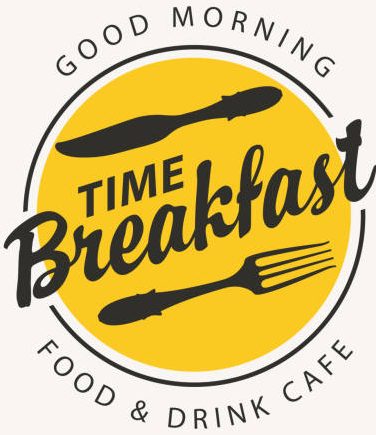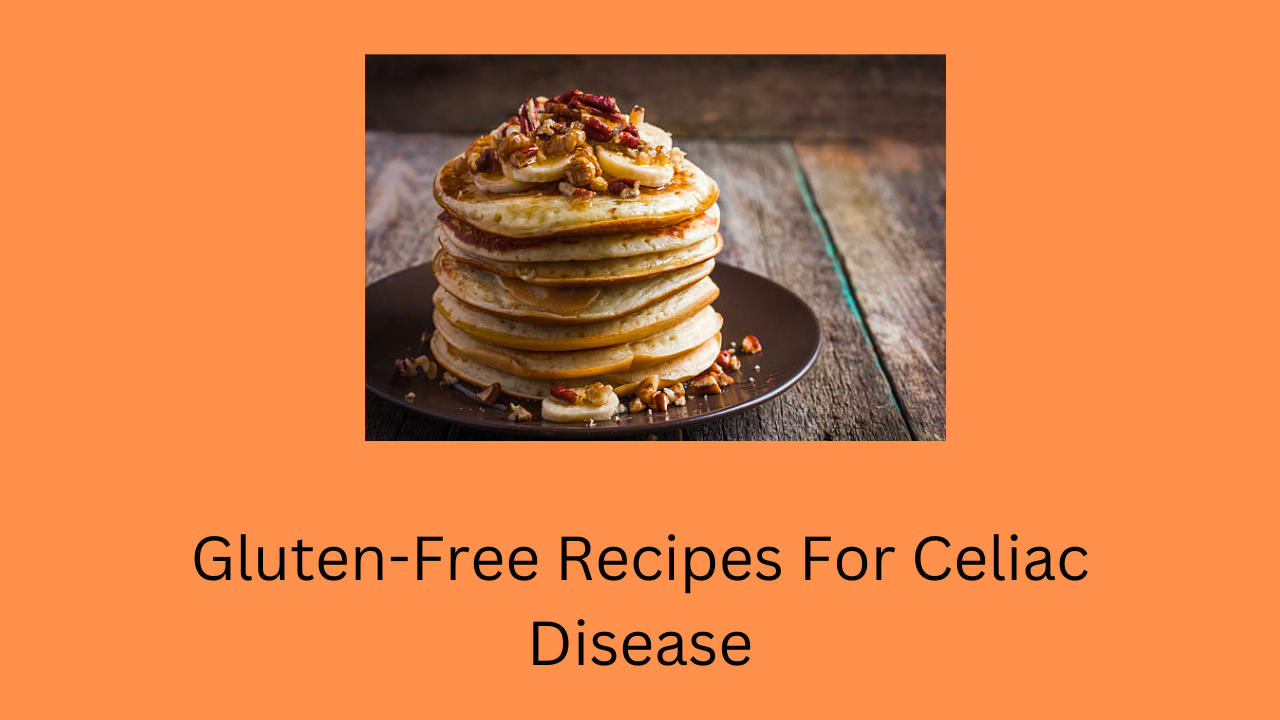Celiac disease is an autoimmune disorder in which the ingestion of gluten—a protein found in wheat, barley, and rye—triggers an immune response that damages the small intestine. For those with celiac disease, adhering to a strict gluten-free diet is the only way to manage the condition and maintain good health.
However, eating gluten-free doesn’t mean sacrificing flavor or variety in your meals. In this article, we’ll explore some delicious gluten-free recipes tailored to individuals with celiac disease.
What Are Celiac Diseases
Celiac disease, also spelled coeliac disease, is an autoimmune disorder characterized by an adverse reaction to gluten, a protein found in wheat, barley, rye, and their derivatives. When individuals with celiac disease consume gluten-containing foods, their immune system responds by attacking the lining of the small intestine.
This immune response damages the small intestine’s villi, finger-like projections responsible for absorbing nutrients from food.
What Are Gluten-Free Recipes
Gluten-free recipes are culinary preparations that do not contain any ingredients containing gluten. Gluten is a protein found in wheat, barley, rye, and their derivatives. People with celiac disease, wheat allergies, non-celiac gluten sensitivity, or those choosing to follow a gluten-free diet for other reasons rely on gluten-free recipes to meet their dietary needs. Gluten-free recipes use alternative flours and ingredients to replicate the taste and texture of traditional gluten-containing dishes.
Importance Of a Gluten-Free Diet For Managing Celiac Diseases
Maintaining a gluten-free diet is of paramount importance for individuals managing celiac disease. Here are some key reasons why adhering to a gluten-free diet is crucial for their health:
- 1. Prevents Intestinal Damage:
For individuals with celiac disease, consuming gluten triggers an autoimmune response that damages the lining of the small intestine. This damage impairs the absorption of essential nutrients, leading to malnutrition and a range of health issues. A gluten-free diet prevents this damage and allows the intestine to heal.
- 2. Alleviates Symptoms:
Celiac disease can manifest with various symptoms, including digestive problems, fatigue, skin issues, and neurological symptoms. Eliminating gluten from the diet typically leads to a significant reduction or complete resolution of these symptoms, improving overall well-being.
- 3. Reduces the Risk of Complications:
Untreated celiac disease can lead to serious complications such as osteoporosis, anemia, infertility, and an increased risk of certain cancers. Adhering to a gluten-free diet substantially reduces the risk of these long-term health issues.
- 4. Promotes Nutritional Health:
Celiac disease can lead to nutrient deficiencies due to malabsorption. By eliminating gluten, individuals can properly absorb essential nutrients like vitamins, minerals, and fiber, promoting better nutritional health.
- 5. Enhances Quality of Life:
The strict nature of a gluten-free diet can initially be challenging, but it ultimately leads to a better quality of life. Individuals with celiac disease can enjoy meals without the fear of adverse reactions, discomfort, or pain.
- 6. Prevents Cross-Contamination:
A gluten-free diet requires vigilance to prevent cross-contamination of gluten-containing foods with gluten-free ones. This awareness can extend to cooking practices and dining out, ensuring safety and peace of mind.j
- 7. Supports Mental and Emotional Health:
The symptoms of celiac disease can impact mental and emotional well-being. Relief from these symptoms through a gluten-free diet often results in improved mental health, reduced stress, and enhanced emotional resilience.
- 8. Encourages Self-Care:
Managing celiac disease necessitates a proactive approach to food choices and label reading. This self-care empowers individuals to take control of their health and make informed dietary decisions.
In essence, a gluten-free diet is not merely a choice but a medical necessity for those with celiac disease. It is the cornerstone of managing the condition effectively, preventing further complications, and enabling individuals to lead healthy, fulfilling lives. By recognizing the importance of a gluten-free diet, individuals with celiac disease can take control of their health and well-being.
Basics of Gluten-free Cooking
Understanding the basics of gluten-free cooking is essential for anyone who needs to follow a gluten-free diet due to celiac disease, gluten sensitivity, or personal dietary choices. Here are the fundamental principles of gluten-free cooking:
1. Gluten-Free Flours:
- Replace wheat flour with gluten-free alternatives like:
- Rice Flour: Commonly used in gluten-free baking and as a thickener.
- Almond Flour: Provides a nutty flavor and works well in cookies and cakes.
- Coconut Flour: Adds moisture and density to baked goods.
- Tapioca Flour: Often used in gluten-free flour blends for its light texture.
- Cornstarch: A good thickener for sauces and gravies.
2. Gluten-Free Grains:
- Incorporate naturally gluten-free grains into your diet, including:
- Quinoa: A complete protein source.
- Rice: White, brown, or specialty types like jasmine or basmati.
- Corn: Used in cornmeal, polenta, and cornstarch.
- Millet: A small, round grain used in both sweet and savory dishes.
- Buckwheat: Despite its name, it’s gluten-free and used in products like soba noodles.
3. Fresh Fruits and Vegetables:
- Most fruits and vegetables are naturally gluten-free and provide essential nutrients. Be cautious with processed or pre-packaged fruits and vegetables, as they may contain gluten-containing additives or preservatives.
4. Proteins:
- Focus on naturally gluten-free protein sources like:
- Meat and Poultry: Unprocessed meats are typically gluten-free.
- Fish and Seafood: Fresh fish and seafood are safe options.
- Legumes: Beans, lentils, and chickpeas are gluten-free and provide plant-based protein.
- Eggs: Eggs are naturally gluten-free and versatile for cooking.
5. Dairy and Dairy Alternatives:
- Most dairy products like milk, cheese, and yogurt are naturally gluten-free. However, be cautious with flavored or processed dairy products, as they may contain gluten-containing additives.
- Dairy alternatives like almond milk, coconut milk, and soy milk are often gluten-free, but it’s essential to check the labels.
6. Gluten-Free Condiments and Sauces:
- Many condiments and sauces contain gluten, so choose gluten-free versions. These include soy sauce (use tamari), Worcestershire sauce, salad dressings, and gravies.
7. Reading Labels:
- Always read food labels carefully to identify gluten-containing ingredients or allergen warnings. Manufacturers are required to label products that contain wheat, but other gluten sources may not be as clearly labeled.
8. Cross-Contamination:
- To prevent cross-contamination with gluten, use separate cooking utensils, cutting boards, and kitchen equipment when preparing gluten-free meals. Ensure a dedicated gluten-free area in your kitchen.
9. Gluten-Free Baking Tips:
- In gluten-free baking, consider adding xanthan gum or guar gum to mimic the binding properties of gluten.
- Experiment with gluten-free flour blends to achieve the desired texture and taste in baked goods.
By mastering these basics of gluten-free cooking and being diligent about ingredient selection and kitchen practices, you can create delicious and safe gluten-free meals that meet your dietary needs and preferences.
Gluten-Free Breakfast Recipes For Celiac Disease
Enjoying a gluten-free breakfast doesn’t mean sacrificing flavor and variety. Here are some delicious gluten-free breakfast recipes to kickstart your day:
1. Gluten-Free Pancakes:

- Ingredients: Gluten-free flour mix, eggs, milk (or dairy-free alternative), sugar, baking powder.
- Instructions: Mix the ingredients, cook, and serve with fresh berries and pure maple syrup.
2. Homemade Granola:

- Ingredients: Gluten-free rolled oats, nuts, honey (or maple syrup), dried fruits.
- Instructions: Mix ingredients, bake until golden brown, and enjoy with yogurt or your favorite milk substitute.
3. Quinoa Breakfast Bowl:

- Ingredients: Cooked quinoa, fresh berries, chopped nuts, honey.
- Instructions: Combine quinoa, berries, and nuts, drizzle with honey for a protein-packed breakfast.
4. Greek Yogurt Parfait:

- Ingredients: Greek yogurt, gluten-free granola, fresh fruits (e.g., berries, banana), honey.
- Instructions: Layer yogurt, granola, and fruits in a glass or bowl, drizzle with honey.
5. Veggie Omelet:

- Ingredients: Eggs, diced bell peppers, onions, spinach, cheese (optional), salt, and pepper.
- Instructions: Whisk eggs, pour into a hot pan, add veggies and cheese, fold, and cook unt lol Zil set.
6. Smoothie Bowl:

- Ingredients: Blend frozen fruits (e.g., berries, banana), spinach or kale, Greek yogurt (or dairy-free yogurt), and a splash of almond milk.
- Instructions: Pour into a bowl and top with gluten-free granola, chia seeds, and fresh fruit.
7. Peanut Butter Banana Toast:

- Ingredients: Gluten-free bread, peanut butter (or almond butter), sliced banana, honey (optional).
- Instructions: Toast the bread, spread with nut butter, top with banana slices, and drizzle with honey.
8. Rice Cakes with Avocado and Smoked Salmon:

- Ingredients: Rice cakes, mashed avocado, smoked salmon, lemon juice, and dill (optional).
- Instructions: Spread avocado on rice cakes, top with smoked salmon, a squeeze of lemon, and a sprinkle of dill.
9. Chia Seed Pudding:

- Ingredients: Chia seeds, almond milk, vanilla extract, honey (or maple syrup), fresh fruit.
- Instructions: Mix chia seeds, almond milk, vanilla, and sweetener, refrigerate overnight, and top with fresh fruit.
10. Breakfast Tacos:

- Ingredients: Corn tortillas, scrambled eggs, black beans, diced tomatoes, avocado slices, and salsa.
- Instructions: Fill tortillas with eggs, beans, tomatoes, avocado, and salsa for a savory gluten-free breakfast.
These gluten-free breakfast recipes offer a range of flavors and textures, from sweet to savory, ensuring a satisfying and nutritious start to your day while adhering to a gluten-free diet.
Gluten-Free Lunch and Dinner
Here are some gluten-free lunch and dinner recipe ideas:
1. Grilled Chicken Salad:
- Grilled chicken breast
- Mixed greens
- Cherry tomatoes
- Cucumber
- Balsamic vinaigrette dressing
2. Quinoa Stir-Fry:
- Cooked quinoa
- Mixed vegetables (bell peppers, broccoli, carrots)
- Gluten-free soy sauce
- Sliced chicken, tofu, or shrimp
3. Baked Salmon with Roasted Vegetables:
- Salmon fillet
- Assorted vegetables (zucchini, bell peppers, asparagus)
- Olive oil, lemon juice, and herbs for seasoning
4. Gluten-Free Pasta with Pesto:
- Gluten-free pasta (e.g., rice or corn pasta)
- Homemade or store-bought pesto sauce
- Cherry tomatoes and pine nuts for garnish
5. Taco Salad:
Ground beef or turkey (seasoned with gluten-free taco seasoning)
- Shredded lettuce
- Diced tomatoes
- Avocado slices
- Salsa and sour cream (check for gluten-free labels)
6. Stuffed Bell Peppers:
- Bell peppers
- Ground beef or turkey
- Rice (use gluten-free)
- Tomato sauce
- Seasonings and herbs
7. Vegetable Curry:
- Mixed vegetables (potatoes, carrots, peas)
- Coconut milk
- Gluten-free curry paste
- Serve with rice or gluten-free naan bread
8. Grilled Shrimp Skewers:
- Shrimp skewers marinated in garlic, lemon, and herbs
- Grilled alongside vegetables
9. Gluten-Free Pizza:
- Gluten-free pizza crust
- Tomato sauce, mozzarella cheese, and your favorite toppings
10. Sushi Bowls:
- Sushi rice (seasoned with rice vinegar and sugar)
- Sliced raw fish or cooked seafood
- Avocado, cucumber, and seaweed strips
- Gluten-free soy sauce for dipping
Remember to check ingredient labels and verify the gluten-free status of condiments, sauces, and seasonings to ensure your meal is entirely gluten-free.
Conclusion
In conclusion, for individuals with celiac disease, adhering to a gluten-free diet is not only a necessity but also an opportunity to enjoy a wide variety of delicious and nutritious meals. From fresh salads to hearty stir-fries, flavorful curries, and even gluten-free versions of favorite comfort foods like pizza, the options are diverse and satisfying.
It’s essential to remain vigilant about ingredient labels and cross-contamination, but with careful planning and creativity, living gluten-free with celiac disease can be both enjoyable and health-conscious.

